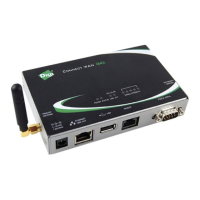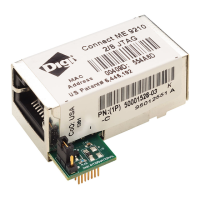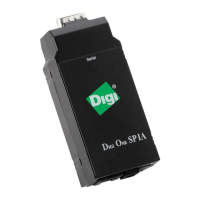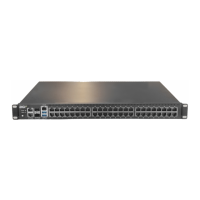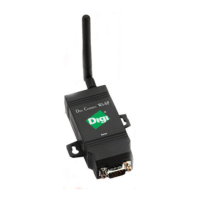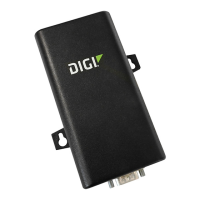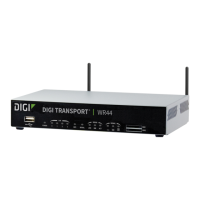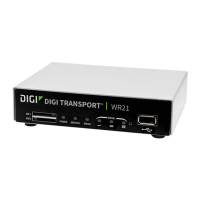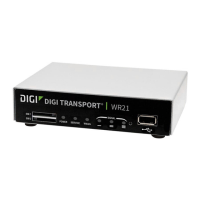Digi Connect and ConnectPort TSFamily features IPprotocol support
Digi Connect Family and ConnectPort TSFamily
13
n
Extended communication control on TCP/UDPdata paths.
l
Timeout
l
Hangup
l
User-configurable Socket IDstring (text string identifier on autoconnect only)
DynamicHost Configuration Protocol (DHCP)
You can use Dynamic Host Configuration Protocol (DHCP) to automatically assign IPaddresses, deliver
IPstack configuration parameters such as the subnet mask and default router, and provide other
configuration information. For more details, see Assign an IPaddressusing DHCP.
Auto IP
TheAuto-IPprotocol automatically assignsan IPaddressfrom a reserved pool of standard Auto-IP
addressesto the computer on which it isinstalled. Digi devices automatically obtain their IP
addressesfrom a DHCPserver. If the DHCPserver is unavailable or nonexistent, Auto-IPassignsthe
device an IPaddress. For more details, see Assign an IPaddressusing Auto-IP.
Simple Network Management Protocol (SNMP)
Simple Network Management Protocol (SNMP) manages and monitors network Digi Connect and
ConnectPort TSFamily devices. The SNMParchitecture enablesa network administrator to manage:
n
Nodes—servers, workstations, routers, switches, and hubs—on an IPnetwork.
n
Network performance, such as finding and solving network problems, and planning for
network growth.
Digi devices support SNMPVersions1 and 2.
For a list of SNMP-related of supported Request for Comments(RFCs) and Management Information
Bases (MIBs), see Supported RFCs and MIBs.
Secure SocketsLayer (SSL)/Transport Layer Security (TLS)
Secure Sockets Layer (SSL)/Transport Layer Security (TLS) providesauthentication and encryption for
Digi Connect and ConnectPort TSFamily products. For more information, see Security features in Digi
devices.
Telnet
Digi Connect and ConnectPort TSFamily devicessupport the following typesof telnet connections:
n
Telnet client
n
Telnet server
n
Reverse telnet, often used for console management or devicemanagement
n
Telnet autoconnect
n
RFC2217, Telnet Com Port Control Option, an extension of the telnet protocol
For more information on these connections, see Network connectionsand data paths. You can enable
or disable access to telnet network services.
Remote login (rlogin)
You can enable or disable accessto rlogin service. When enabled, users can use rlogin to remotely
sign in to systems.
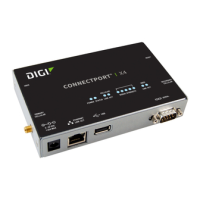
